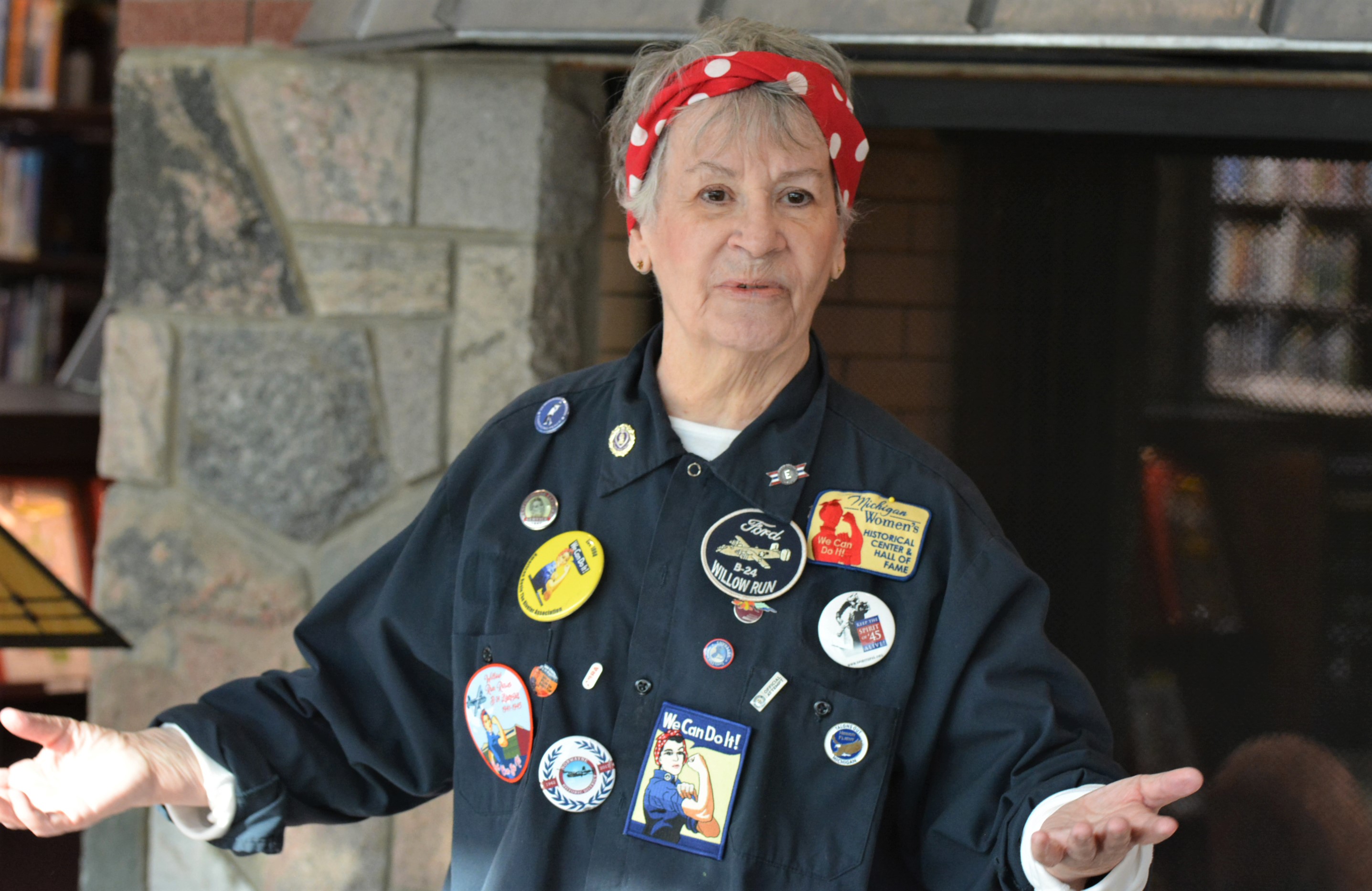
When American men marched off to fight in Europe and the Pacific during World War II, the 16 million women they left behind went to work in factories and shipyards making the tools needed to defeat the Axis powers.
Their contributions on the home front were embodied by the cultural icon known as Rosie the Riveter.
Featured prominently in songs, artwork, propaganda posters and promotional films, the character inspired American women to do their part by filling the void created when men traded their work clothes and lunch pails for military uniforms and guns.
On Friday afternoon, Donnaleen Lanktree, a Rochester resident who serves as president of the American Rosie the Riveter Association (ARRA), visited the Oxford Public Library to share stories from these working women as part of a fireside chat series.
Founded on Dec. 7, 1998, the ARRA is dedicated to recognizing and preserving the history and legacy of working women, including volunteers, during WWII.
Before the war, American women had been “expected to stay home, raise the children and defer to their husbands,” she said. If they did work, their options were limited to jobs that society deemed acceptable for ladies such as teachers and secretaries.
But the “acute” shortage of male laborers caused by the war soon “forced the culture and the government to suspend their gender discrimination and actively recruit women (for) the workplace,” Lanktree said.
Single women were the first to fill the labor vacuum. But by 1943, there was no longer enough of them left to recruit, so the call went out for married women to trade domestic life for the bustling factory floor.
Lanktree’s mother was one of those women. While her father was off fighting in Europe with the U.S. Army, her mother was working at a Detroit factory riveting wings on airplanes.
“My mother, she could have won the war by herself,” Lanktree said. “She was a spitfire . . . She was actually chosen (to be) a model at one time and she played women’s league baseball. As feminine as she was, she could still be pretty feisty . . . She enjoyed the work (in the factory). She knew that she was doing this for the boys (overseas).”
But not all Rosies were riveters.
They sanded, welded, operated cranes, drove trucks and buses, rolled bandages, folded parachutes, manufactured bullets and bombs, worked on assembly lines, made uniforms, collected materials critical to the war effort, served on rationing boards and worked with organizations such as the Red Cross and United Services Organizations (USO).
“We include a lot of other people in (the definition of) Rosies,” she said. “We include anybody that helped in the war effort or took a man’s job.”
Using their own words, Lanktree shared numerous letters and stories from real Rosies. They talked about working conditions, using tools for the first time, waiting for loved ones serving overseas, collecting items for scrap drives, the rationing of food and gasoline, the death of President Franklin D. Roosevelt and celebrating the end of the war.
When one of the Rosies was asked what she did with her first paycheck, she replied, “Being it’s all mine, I spent it.”
“A lot of women did not work outside of the house before (the war) and a lot of them never had a paycheck. Now, all of the sudden they’re getting a paycheck,” Lanktree said.
Instead of making $1 per day working at small stores, these women earned about $1 per hour punching the clock in factories.
That was a lot of money at the time, but then again, “there was nothing to buy” due to shortages and rationing, Lanktree said, so they either saved their wages or purchased war bonds. When those bonds matured, many holders used them to purchase homes.
Some Rosies got to rub elbows with big wigs. One of them was Mabel Myrick, a Rosie who lives in Alabama. She worked in the Pentagon as a secretary for the War Department and because of this, she got invited to a garden party at the White House where she met President Harry S. Truman and First Lady Bess Truman.
“Only in America could a little girl from Alabama shake hands with the President of the United States,” Lanktree said.
Over the years, Lanktree has enjoyed getting to know many Rosies from all walks of life and all over the country.
“A lot of them are so sharp and funny and witty,” she said “Each time I meet them, they tell me something different.”
Like the surviving WWII veterans, the remaining Rosies are in their 90s, meaning their numbers are dwindling and someday, they will be no more.
“Every day we lose a Rosie,” Lanktree said.
Lanktree hopes folks will take some time to honor all of them on March 21, which was designated as National Rosie the Riveter Day per a U.S. Senate resolution approved in 2017.
For more information about the ARRA and its mission, visit their website.

Leave a Reply